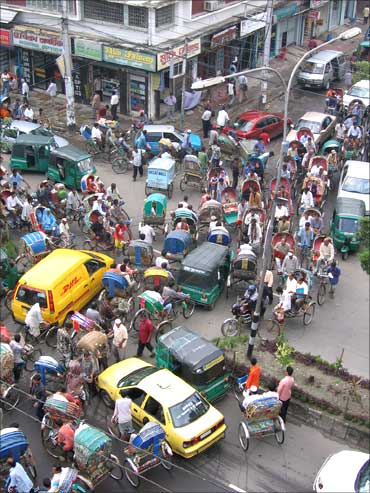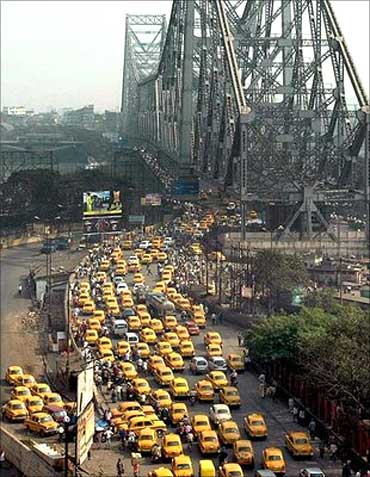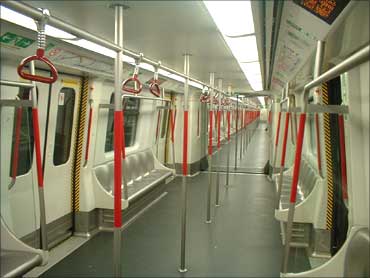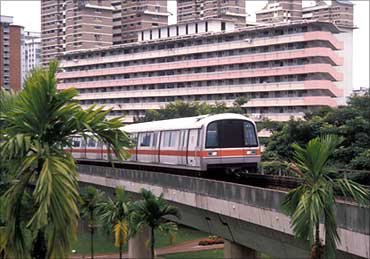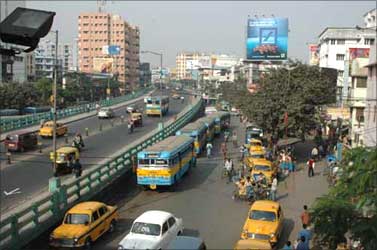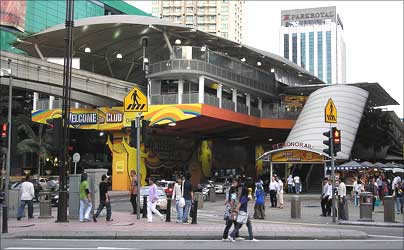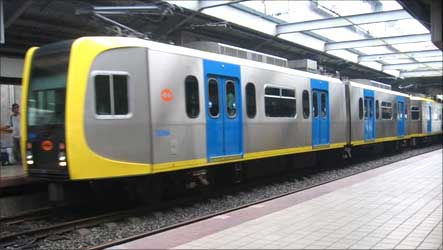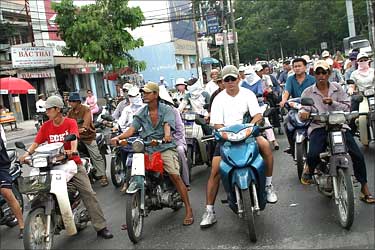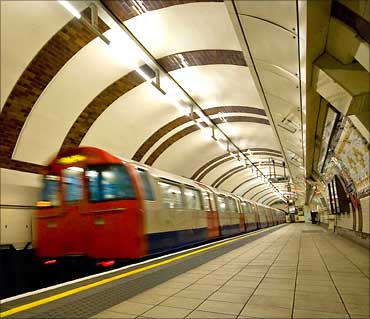 | « Back to article | Print this article |
This is the only solution to India's traffic woes
More and more Asian govts are focusing on public transport that's both mass-scale and rapid, and, generally, subsurface for better connectivity, feels Barun Roy.
A friend, visiting from Dhaka, recently told me something about that city's notorious road traffic that was truly revealing.
"When we moved to our new apartment in Dhanmondi from our rented place in Wari in 2003, I would hardly see five or six cars passing our road at any given time," he said.
"Today, the traffic is always so dense that sometimes I've to wait up to five minutes even to get my car out of the garage."
Click on NEXT to read more...
This is the only solution to India's traffic woes
Visiting NRIs say the same thing of Kolkata. There are cars, cars, and cars, and the city is literally choking.
One could say the same thing of perhaps most other exploding cities in Asia, where privately-owned cars are jostling fiercely with buses and taxis and autos for the right of way.
As traffic worsens, more buses, taxis and autos are piled on the very limited road space that most cities have, as if that's the only way to ease it up.
The result is urban chaos that's going out of control and reducing urban liveability to the bones.
Click on NEXT to read more...
This is the only solution to India's traffic woes
Yet, in the ten years that I lived in Hong Kong, the entire decade of the eighties, I never ever felt I needed to own a car.
There was absolutely no need, public transport was so good.
The subway became a matter of habit, and the Star Ferry almost second nature.
Of course, like in any city, there were buses and minibuses and taxies, but it was the Mass Transit Railway, the MTR, that made the real difference.
Click on NEXT to read more...
This is the only solution to India's traffic woes
That's the main thing about liveability - connectivity.
A city must be good enough for people to feel it's not a hassle to go out, either for work or business or leisure, even without the use of one's own transport.
Otherwise, why would Singapore decide to have subways to cover every nook and corner of the island republic, even though it's small?
Click on NEXT to read more...
This is the only solution to India's traffic woes
It's the liveability criterion that's driving more and more Asian governments to expand their public transport systems.
But not just any form of public transport, it's important to remember. Not simply more buses or taxis or autos.
If these alone were enough, Kolkata would have been Asia's most liveable city!
Clearly, they are not, and are themselves the crux of the problem. The focus, therefore, is on public transport that's both mass-scale and rapid, and, generally, subsurface.
Click on NEXT to read more...
This is the only solution to India's traffic woes
Malaysia, for example, is looking to overhaul public transport in the Klang Valley, the seat of its capital, Kuala Lumpur.
The idea is to re-route buses through less congested roads, expand the existing light railway network, and create a 156 km MRT network within a 20-km radius around Kuala Lumpur city centre, so that travel by public transport doubles to 25 per cent by end-2012.
Click on NEXT to read more...
This is the only solution to India's traffic woes
The Philippines is more ambitious. Bogged down under a huge mess of jeepneys, buses, Tamaraws, taxis, tricycles, and 'trisikads' (bicycles with side cars), it now wants 66 per cent of all motorised trips in Metropolitan Manila to be on public transport by 2015, and has major new expansion plans for its mostly elevated MRT, known as the Blue Line.
Click on NEXT to read more...
This is the only solution to India's traffic woes
Vietnam has taken a long time to make up its mind, but, having made it, is ready to proceed with determination.
Ho Chi Minh City, where motorcycles account for 74 per cent of all non-walking trips made by its residents, is set to have its first metro line by 2014.
Altogether, six subway lines are planned, forming a $9.7-billion, 161-km network to link the heart of the city with surrounding districts.
Click on NEXT to read more...
This is the only solution to India's traffic woes
But it's China where real progress is being made. Eleven Chinese cities now have metros, Shenzhen being the latest.
Shanghai leads the pack with 12 lines, 420 km of tracks, and an average daily traffic of 3.4 million passengers.
Plans are for a total of 22 lines and 877 km of tracks by 2020. Beijing, with nine lines and 228 km of tracks already in place, isn't lagging far behind and has set a goal of 19 lines and 561 km of tracks by 2015.
The Guangzhou network is being expanded to handle 4 million passengers daily.
Five years from now, the entire country will have more than 3,000 km of subways (against 940 km at the end of 2009), involving a cost of more than $146 billion.
Click on NEXT for more...
This is the only solution to India's traffic woes
The message is loud and clear. After a point, buses are counter-productive in most Asian urban conditions.
And taxis don't count as people movers, which is why London has only 2.9 taxis for every 1,000 people.
New York has even less: 1.8 for every 1,000.
If the concern is to create liveable cities, with painless connectivity from home to work and less pollution, mass transit railways must be the principal element of any urban public transport system for it to be truly mass, rapid, and credible.
